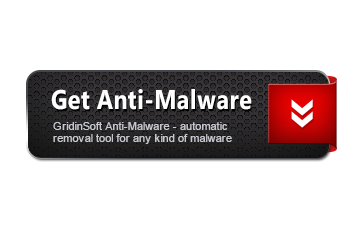The Mikey.139400 is considered dangerous by lots of security experts. When this infection is active, you may notice unwanted processes in Task Manager list. In this case, it is adviced to scan your computer with GridinSoft Anti-Malware.

Gridinsoft Anti-Malware
Removing PC viruses manually may take hours and may damage your PC in the process. We recommend using GridinSoft Anti-Malware for virus removal. Allows to complete scan and cure your PC during the trial period.
What Mikey.139400 virus can do?
- SetUnhandledExceptionFilter detected (possible anti-debug)
- Behavioural detection: Executable code extraction – unpacking
- Executed a command line with /C or /R argument to terminate command shell on completion which can be used to hide execution
- Yara rule detections observed from a process memory dump/dropped files/CAPE
- Creates RWX memory
- Possible date expiration check, exits too soon after checking local time
- Checks adapter addresses which can be used to detect virtual network interfaces
- Dynamic (imported) function loading detected
- Reads data out of its own binary image
- A process created a hidden window
- CAPE extracted potentially suspicious content
- Drops a binary and executes it
- Unconventionial language used in binary resources: Korean
- The binary likely contains encrypted or compressed data.
- Authenticode signature is invalid
- Uses Windows utilities for basic functionality
- Enumerates services, possibly for anti-virtualization
- Behavioural detection: Injection (Process Hollowing)
- Executed a process and injected code into it, probably while unpacking
- Deletes its original binary from disk
- Behavioural detection: Injection (inter-process)
- Installs itself for autorun at Windows startup
- Installs itself for autorun at Windows startup
- CAPE detected the Tofsee malware family
- Deletes executed files from disk
- Attempts to interact with an Alternate Data Stream (ADS)
- Uses suspicious command line tools or Windows utilities
How to determine Mikey.139400?
File Info:
name: 8A024052D87D1FBA675A.mlwpath: /opt/CAPEv2/storage/binaries/493efbc38a2c8fe0cfd124215fc3868a9591223dcc6e53197e56e93ffe2d382acrc32: CBF09220md5: 8a024052d87d1fba675a0d6caddb84f6sha1: ea81c8f9e808bd4fb1dfcf0eecc8123eb9daa352sha256: 493efbc38a2c8fe0cfd124215fc3868a9591223dcc6e53197e56e93ffe2d382asha512: cddda8b166c9fc69c32ee8c792e55277f164e599874b8b2ece21b93a15452c9b0777ca3cfe313d0fd8d4601fef8b45415c92668b8f71806d969c0299d745e2ffssdeep: 6144:cvD6Fdh8RMzshHjwFTGoX3dvOHK6e/MHK+I7ki:qWqmzSHjwDXtmq6YMHtype: PE32 executable (GUI) Intel 80386, for MS Windowstlsh: T12B549E10BA50D035F1F722F84A7A92A8B92D3ED19B6450CB62D47AEE57346E0FC3131Bsha3_384: 70c3f6f849757390a695e89195e26290b321f2a694dc8998d8f5c2fc0566017269c1d845e1ea2c2c837194b2ed02805bep_bytes: 8bff558bece896a60000e8110000005dtimestamp: 2021-07-24 21:40:35Version Info:
Translations: 0x0152 0x036f
Mikey.139400 also known as:
| Bkav | W32.AIDetect.malware2 |
| Elastic | malicious (high confidence) |
| MicroWorld-eScan | Gen:Variant.Mikey.139400 |
| FireEye | Generic.mg.8a024052d87d1fba |
| CAT-QuickHeal | Ransom.Stop.P5 |
| Cylance | Unsafe |
| Sangfor | Trojan.Win32.Save.a |
| Cybereason | malicious.9e808b |
| Cyren | W32/Agent.ETY.gen!Eldorado |
| Symantec | ML.Attribute.HighConfidence |
| tehtris | Generic.Malware |
| Kaspersky | UDS:DangerousObject.Multi.Generic |
| BitDefender | Gen:Variant.Mikey.139400 |
| Sophos | ML/PE-A + Troj/Krypt-FV |
| McAfee-GW-Edition | BehavesLike.Win32.Virut.dh |
| Trapmine | malicious.moderate.ml.score |
| GData | Win32.Trojan.PSE.10CPGR |
| Cynet | Malicious (score: 100) |
| McAfee | Packed-GEE!8A024052D87D |
| MAX | malware (ai score=89) |
| VBA32 | BScope.Trojan.Crypt |
| APEX | Malicious |
| Rising | Trojan.Generic@AI.97 (RDML:tSQhES6C31/nlM9Sa5OUBw) |
| SentinelOne | Static AI – Malicious PE |
| MaxSecure | Trojan.Malware.300983.susgen |
| Fortinet | W32/Kryptik.HEQT!tr |
| CrowdStrike | win/malicious_confidence_100% (D) |
How to remove Mikey.139400?
- Download and install GridinSoft Anti-Malware.
- Open GridinSoft Anti-Malware and perform a “Standard scan“.
- “Move to quarantine” all items.
- Open “Tools” tab – Press “Reset Browser Settings“.
- Select proper browser and options – Click “Reset”.
- Restart your computer.



Leave a Comment